- Home
- Sandra Cisneros
A House of My Own Page 7
A House of My Own Read online
Page 7
Somehow my Latino hosts had gotten ahold of a packet of corn flour, and this is what they tossed my way with orders to produce tortillas. “Así como sea.” Any ol’ way, they said, and went back to their cooking.
Why did I feel like the woman in the fairy tale who was locked in a room and ordered to spin straw into gold? I had the same sick feeling when I was required to write my critical essay for the MFA exam—the only piece of noncreative writing necessary in order to get my graduate degree.*3 How was I to start? There were rules involved here, unlike writing a poem or a story, which I did intuitively. There was a step-by-step process needed, and I had better know it. I felt as if making a tortilla—or writing a critical paper, for that matter—was a task so impossible I wanted to break down into tears.
Somehow, though, I managed to make tortillas—crooked and burned, but edible nonetheless. My hosts were absolutely ignorant when it came to Mexican food; they thought my tortillas were delicious. (I’m glad my mama wasn’t there.) Thinking back and looking at an old photograph documenting the three of us consuming those lopsided circles, I’m amazed. Just as I’m amazed I could finish my MFA exam.
I’ve managed to do a lot of things in my life I didn’t think I was capable of and that many others didn’t think I was capable of either. Especially because I’m a woman, Latina, and an only daughter in a family of six sons. My father would’ve liked to have seen me married long ago. In our culture men and women don’t leave their father’s house except by way of marriage. I crossed my father’s threshold with nothing carrying me but my own two feet. A woman whom no one came for and no one chased away.
To make matters worse, I left before any of my six brothers had ventured away from home. I broke a terrible taboo. Somehow, looking back at photos of myself as a child, I wonder if I was aware of having begun already my own quiet war.
I like to think that somehow my family, my Mexicanness, my poverty,*4 all had something to do with shaping me into a writer. I like to think my parents were preparing me all along for my life as an artist even though they didn’t know it. From my father I inherited a love of wandering. He was born in Mexico City, but as a young man he traveled into the United States vagabonding. He eventually was drafted and thus became a citizen. Some of the stories he has told me about his first months in the United States with little or no English, surface in my stories in The House on Mango Street, as well as others I have in mind to write in the future.*5 I inherited from him a sappy heart. He always cries when he watches Mexican soaps—especially if they deal with children who have forsaken their parents.
Kiki (Keeks) and me
My mother was born like me—in Chicago of Mexican descent. It’s her tough, streetwise voice that haunts all my stories and poems. An amazing woman who loves to draw and read books and can sing an opera. A smart cookie.
When I was a girl we traveled to Mexico City so much I thought my grandparents’ house on Fortuna, number 12, was home. It was the only constant in our nomadic ramblings from one Chicago flat to another. The house on “Destiny Street,” number 12, in the Colonia Tepeyac would be perhaps the only home I knew, and that nostalgia for a home would be a theme that would obsess me.
My brothers also figured in my art. Especially the older two. Henry,*6 the second oldest and my favorite, appears often in poems I’ve written and in stories, which at times only borrow his nickname, Kiki. He played a major role in my childhood. We were bunk-bed mates. We were co-conspirators. We were pals. Until my oldest brother came back from studying in Mexico and left me odd woman out.
Credit 8.4
Cisneros grandparents’ house, Fortuna #12, Colonia Tepeyac, Mexico City
What would my teachers say if they knew I was a writer now? Who would’ve guessed it? I wasn’t a very bright student. I didn’t much like school, because we moved so much and I was always new and funny looking. In my fifth-grade report card I have nothing but an avalanche of Cs and Ds, but I don’t remember being that stupid. I was good at art, and I read plenty of books, and Kiki laughed at all my jokes. At home I was fine, but at school I never opened my mouth except when the teacher called on me.
When I think of how I see myself, it would have to be at age eleven. I know I’m thirty-two on the outside, but inside I’m eleven. I’m the girl in the picture with skinny arms and a crumpled skirt and crooked hair. I didn’t like school because all they saw was the outside me. School was lots of rules and sitting with your hands folded and being afraid all the time. I liked looking out the window and thinking. I liked staring at the girl across the way writing her name over and over again in red ink, or the boy in front of me who wore the same dim shirt every day. I imagined their lives and the houses they went home to each evening, wondering if their world was happy or sad.
I think my mother and father did the best they could to keep us warm and clean and never hungry. We had birthday and graduation parties and things like that, but there was another hunger that had to be fed. There was a hunger I didn’t even have a name for. Was this when I began writing?
In 1966 we moved into a house, a real one, our first real home. This meant we didn’t have to change schools and be the new kids on the block every couple of years. We could make friends and not be afraid we’d have to say goodbye to them and start all over. My brothers and the herd of boys they brought home would become important characters eventually for my stories—Louie and his cousins, Meme Ortiz and his dog with two names, one in English and one in Spanish.
My mother flourished in her own home. She took books out of the library and taught herself to garden, to grow roses so envied we had to put a lock on the gate to keep out the midnight flower thieves. My mother has never quit gardening.
My eighth-grade graduation photo from St. Aloysius
My mother in front of the garage of our Campbell Street house
This was the period in my life, that slippery age when you’re both child and woman and neither, I was to record in The House on Mango Street. How was I to know I’d document the women who sat their sadness on an elbow and stared out a window?
I’ve done all kinds of things I didn’t think I could do since then. I’ve gone to a prestigious university, studied with famous writers, and taken an MFA degree. I’ve taught poetry in schools in Illinois and Texas. Writing awards arrived, and with them I ran away as far as my courage would take me. I’ve seen the bleached and bitter mountains of the Peloponnesus. I’ve lived on an island. Admired the Venice moon in winter. Lived in Yugoslavia. Visited the Nice flower market. Witnessed the daily parade of promenaders in a village in the pre-Alps.
Credit 8.7
At the Woolworth’s counter in San Antonio
Texas is another chapter in my life, land of Polaroid-blue skies and big bugs. I met Chicano artists and políticos, including a mayor with my last name. Texas generously granted me the Dobie Paisano fellowship, a six-month residency on a 254-acre ranch. Texas also brought Mexico back to me: in the sky, the food, the feast days, and, most important, the language.
Back in the days when I would sit at my favorite people-watching spot, the snaky Woolworth’s counter*7 across from the Alamo, I couldn’t think of anything else I’d rather be than a writer.*8 I’ve traveled and lectured from Cape Cod to San Francisco, to Spain, Yugoslavia, Greece, Mexico, France, Italy, and now today to Texas. Along the way there has always been straw for the taking. With a little imagination, it can be spun into gold.
* * *
*1 When I wrote this, I was naive enough to believe flour tortillas were from Guanajuato, the land of the black, blue, gray, and yellow tortilla, but, no, not flour. My mother made flour tortillas, which she no doubt learned from her mother. But flour tortillas are from the northern Mexican region and the Southwest U.S. My mother’s parents lived in El Paso; Flagstaff; Rocky Ford, Colorado; Kansas City; and finally Chicago when they emigrated from central Mexico. Somewhere in their meanderings, flour replaced corn.
*2 Invariably that someone was a servant, an indigenous wom
an, usually from the country. My father’s family was middle class. But these were themes I didn’t think about back then.
*3 That terrible essay was written with neither conviction nor truth. It was a hoop I had to jump through, and jump I did. I had no clue how to write such an essay and disavow it now.
*4 I’d never use the word “poverty” now; “poor,” maybe. My cousin Anita said, “I thought your family was rich compared to us.” Wealth is relative (forgive the pun).
*5 I’d write my father’s stories in Caramelo.
*6 My brother Henry “Kiki” or “Keeks” Cisneros is not the Henry Cisneros who served as mayor of San Antonio and secretary of housing during the Clinton administration. My Henry is an artist and musician.
*7 Which has since been torn down to make way for a Ripley’s Believe It or Not Museum. My friend the artist Rolando Briseño thinks this is hilarious and totally appropriate given that the Alamo is a believe-it-or-not story too.
*8 At fifty-nine I can think of plenty of things I’d rather be than a writer: a curandera; a cartoon voice-over actor; a flamenco dancer; a bandoneon player; an opera singer; a comedienne; a shoe designer; a medium; a milliner; a popcorn vendor; a florist; a mattress tester; a dog sitter; a window dresser; a textile curator; a henna hand painter; a judge on RuPaul’s Drag Race. Anything more social.
A Tango for Astor
I’ve been delirious about the music of Astor Piazzolla since I first heard it in the mid-1970s, a combination of tango, jazz, symphony, and chamber music. I’ve always felt his music tells my story.
Piazzolla was as extraordinary a musician as he was a composer. His principal instrument was the bandoneon, a devil of a device perched on the knee like an accordion but as mighty as an organ. Near the end of his life he said his greatest wish was that his music would continue to be heard in the year 2020. Given that his compositions are now a staple in the repertoire of many musicians from Yo-Yo Ma to Al Di Meola, it seems likely his wish will be granted.
Thanks to Piazzolla I had a longtime dream of running off to Buenos Aires and learning to dance the tango. But when I finally got there and watched the protocol of the tango halls, it took me back to the passive high school sock hops I hated as a teenager. If you were female you had to sit on the sidelines and wait for a man to pick you, and then you had to simper and smile and make him feel great-full. That’s not for me. So I gave up on that dream and just bought the shoes.
Still, I’d love to imagine I can play the bandoneon myself, make it twist and squeal and whine and howl like a fabulous orgasm. It must be wondrous to do that with an instrument, though I’m told the bandoneon takes a lifetime to conquer. Oh well, ni modo, nothing to be done about it in this life.
I think Piazzolla’s music demands you dance alone, preferably under the stars. After I’ve written and there’s no one about to make me feel silly, I like a glass of wine as plush as the menstrual wall, a cigar like the kind my grandfather el coronel smoked, and Piazzolla. This induces me to write poetry for reasons I don’t want to understand.
I delivered the following for a 2005 dinner lecture at St. Mary’s University in San Antonio. It was a story I’d told enough times out loud. But telling a story on paper is a whole other matter. Out loud you can rely on gesture and voice, facial expressions and pauses to help create a picture. When you write a story down you have no props but the words, the punctuation, and the white spaces in between. The white spaces for me are as important as the black print. They’re like the sheet music the musicians follow when they perform a composition. Everything should already be there for the reader to follow.
I met the Argentine tango composer and musician Astor Piazzolla in 1988, on a Sunday, April 24th, at the Great American Music Hall on O’Farrell Street, San Francisco. I’m sure of the date because I have a signed flyer to prove it. I needn’t have bothered. The date is engraved in my corazón. The year before I’d barely survived the thirty-third year of my life, a time when you die and, hopefully, are resurrected.
So 1988 was the year of my resurrection. I remember driving the five hours from Chico, California, where I was a guest professor, convinced Astor Piazzolla, the man who had revolutionized tango, had come to California to meet me. The year of my near death I’d lost my purpose for living. I know it sounds overly dramatic, but that’s the truth. I was tired of the nuisance of staying alive. I couldn’t understand why I was put on the planet if I couldn’t seem to do anything that would earn me my keep. I was weepy and nervous and skittish as a cat. In Texas I’d been without a job for almost a year. A friend teaching at Cal State, Chico, was taking a temporary leave, and he had recommended me for his position.
The last thing I wanted was to teach at a university. I’d never felt at home there. The truth was I didn’t feel smart enough as a student, let alone as a professor. Yet here was a job at a university being offered to me. I was so broke, I was forced to overlook my terror and take it.
I borrowed money from my family for the umpteenth time, dragged my thrift-store furniture in a trailer, and soon discovered what I had feared all along: I was a failure. The lethargy of my freshman composition students compared to the adults I’d taught at community centers convinced me I was no good, I was worthless, I was a dud. At least, that was the way I saw it then.
And if I wasn’t any good at teaching…and if I was thirty-three years old and still borrowing to get by…and so what if I’d written a book that earned me hardly enough to cover a few months’ rent…and I hated being in academia, feeling like I had to know everything when I hardly knew anything…and what if I was discovered for being the fraud I was…and if I had to borrow money from my family one more time, well…I’d lost my will to go on.
But a national writing award arrived in the nick and reminded me why I was put on the planet, and now here I was, and here he was, Astor Piazzolla, one of the greatest musicians and composers of the new tango, the greatest, in my opinion, coming to play. For me!
I’d been introduced to the music of Piazzolla in my mid-twenties by my nemesis, the Zapata of my heart, who inspired several poems and stories and my travels through Europe so that I might become exactly like him, worldly and sophisticated, instead of the naive fraidycat that I was.
Piazzolla’s music, a tempest of notes, came by way of this man, my lover, who in a sense was the same as the music. A yelp caught somewhere between pain and pleasure. A howl filled with longing and despair. The little burn a mouth leaves on the flesh. Intense, tender, comical, ferocious, faithless, and, ultimately—doomed. All of this haunts me when I listen to Piazzolla’s compositions, merging the traditional Buenos Aires tango with New York avant-garde jazz. Piazzolla taught me how to become the artist I wanted to become.
“It’s like this, you fool,” I imagined Piazzolla saying. “Listen.” And the yowl of his bandoneon, a collision of beauty and tragedy bloodied together, became my teacher. I was hungry to serve my apprenticeship.
When I was lost, sad, defeated, frustrated with my writing, with my life, I had only to listen to Piazzolla’s music, and it would shine a light beam into the night, an arrow piercing a target, a guide as pure and steady as the North Star.
This explains my supreme arrogance and naïveté in the darkness of the Great American Music Hall that day in 1988. El maestro emerged onstage all in black, as black as his bandoneon, dignified, divine. Then he began. A music that rose up terrible like a knife held at one’s own heart, weepy, melodramatic, corny, wonderful all at once. Violin, bandoneon, cello, piano like rain. I had to stand up and lean against a pillar, blow my nose with a cocktail napkin. When the lights blinked on for intermission, I took off backstage.
I wasn’t drunk. How to explain the absolute confidence of my mission? I shoved the swinging doors that separated the gods from the rabble and marched right in. Surprisingly, there were no security guards, no bouncers or police. No one. Just a sad, empty corridor too shabby to shelter greatness.
Outside an open doorway I heard voices, an
d suddenly lost my courage. Then the outrageousness of my actions caught up with me. Astor and his musicians were probably exhausted and taking a well-deserved break. I was at a loss for what to do next.
Luckily somebody appeared to solve the problem, a young guy with the same idea of meeting his idol as me, but with more bravado. We started jabbering, loud enough so that eventually Piazzolla popped out to see why we were there.
The fan knew exactly what he wanted; he asked for an autograph and handed Piazzolla a cheap yellow flyer announcing the evening’s event. What else could I do, but get ready to do the same. But what would I say to him?
First I had to tell him. I had to tell him what I’d been holding in my heart all these years. I wanted to say, Astor, your music has buoyed me through so many disappointments, through the exploding cigars of love, through near deaths, through my own death and resurrection. I traveled to find myself when I listened to your music. It was your music I listened to for courage when I first arrived on the Greek islands in the Aegean, and on the boat that pulled me away from Greece where I finally finished my first novel, and on the cold nights in Paris, when I didn’t have any money and was sleeping on the floor of the Argentines. Astor, you don’t know. It’s been so hard to invent myself and become the writer I’ve wanted to become. I had to run away from home. I had to buy a one-way ticket to Athens because I’d never been anywhere alone before even though I was almost thirty. And when I was washing my socks in the sink on a cold winter morning in Chicago or in Tuscany, in the pre-Alps of southern France, or in South Texas, riding across town on a bicycle, or driving across country, Astor, you taught me with your music the kind of passion I wanted to reach in my work. I’m aware, Astor, you struggled to find your own voice, how your teacher Nadia Boulanger advised you to take up the instrument you had abandoned because you were embarrassed by the bandoneon. She was reminding you to remember who you are, and making you feel less ashamed and praising you for being no one but you, and sent you back to that despised part of yourself, because it was you you had abandoned, and in that monster of a box you’d been able to leap from the sentimental to sentiment, which is a fine line, and how the traditionalists wanted to murder you for what you did to their tango, and how it had been so hard for me to become a writer, but your music, Astor, your music had shown me, when I was cold and afraid, to be fearless. You made the tango yours, Astor, and it became mine the years of my twenties, and now in my early thirties, having just barely escaped the maw of death, that terror was in your music, Astor, everything was in your music, the nemesis I loved who abandoned me, and how from that open wound, I had transformed the yelp into a howl, and that howl was my work, inspired by you, Astor, do you understand?

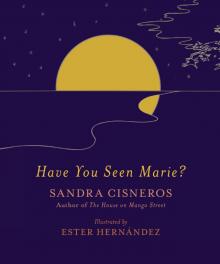 Have You Seen Marie?
Have You Seen Marie?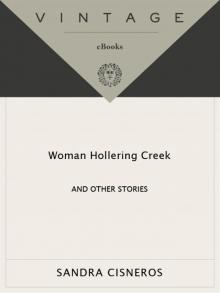 Woman Hollering Creek: And Other Stories
Woman Hollering Creek: And Other Stories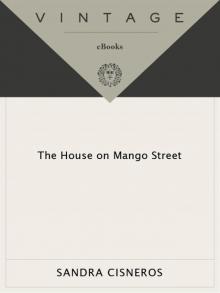 The House on Mango Street
The House on Mango Street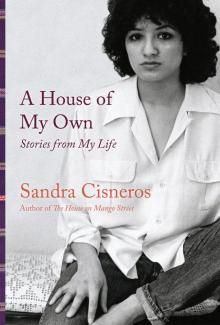 A House of My Own: Stories From My Life
A House of My Own: Stories From My Life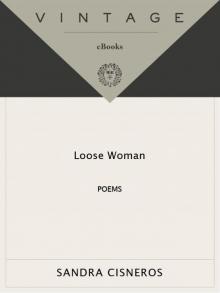 Loose Woman
Loose Woman Caramelo
Caramelo Martita, I Remember You/Martita, te recuerdo
Martita, I Remember You/Martita, te recuerdo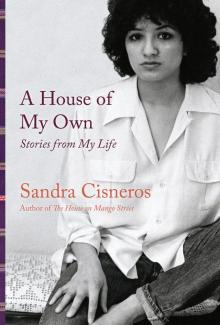 A House of My Own
A House of My Own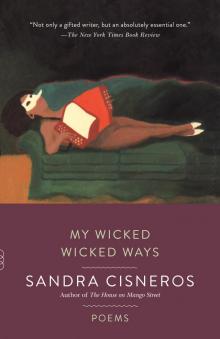 My Wicked Wicked Ways
My Wicked Wicked Ways